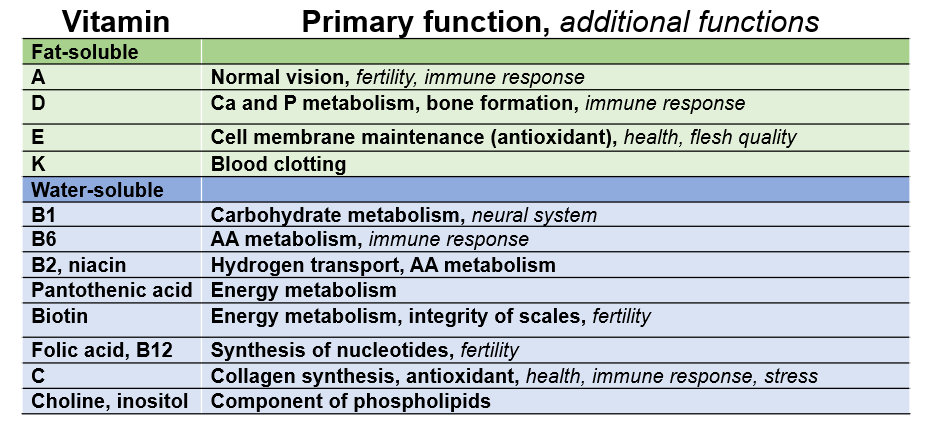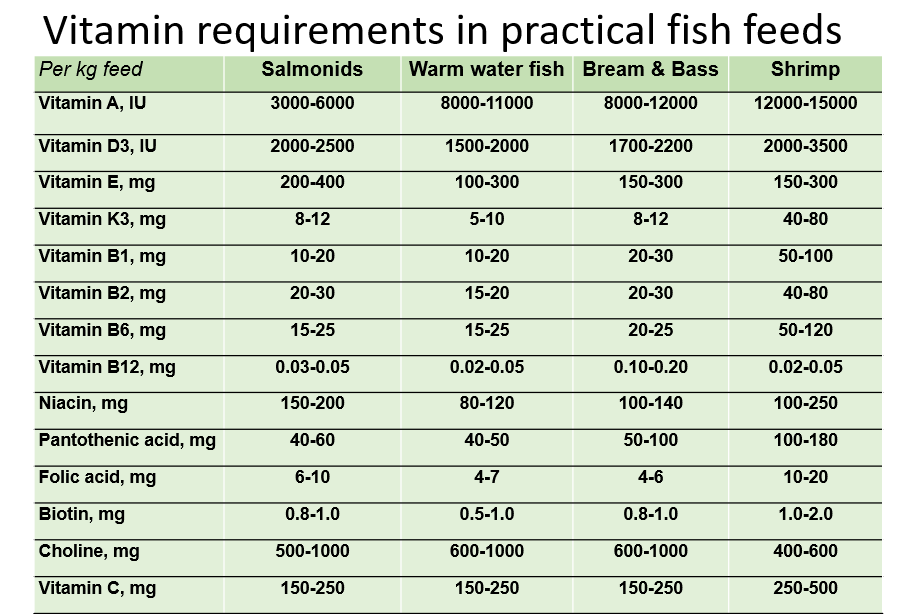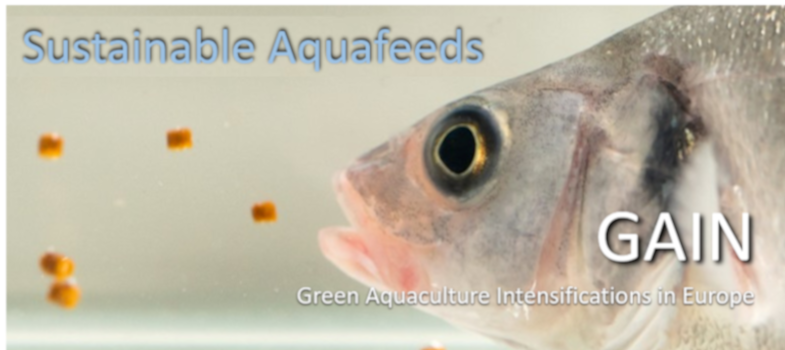Vitamins
In contrast to amino acids, carbohydrates, and lipids, vitamins are organic compounds required in relatively small amounts, but crucial to support specific structural or metabolic functions. Fifteen vitamins are essential and therefore necessary part of the diet since these substances are not synthesized or synthesized quantities will not meet the needs of the farmed fish. Vitamins are divided into two groups based on solubility.

Figure 11. Schematic representation of fat-soluble and water-soluble vitamins
Temperature changes, humidity, and light exposure have always been concerns regarding vitamin stability. However, protective coatings and chemical modifications have made vitamin stability during feed manufacturing and storage much better. The development of various stabilized forms of ascorbic acid (vitamin C) which is one of the most sensitive vitamins to light and temperature, for example, is an excellent illustration of this. Nevertheless, feed producers need to pay close attention to the shelf life of specifically vitamin C, as this is still very short. As a result, commercial production is rarely affected by vitamin deficiency.
Fish can go for relatively long periods without fat-soluble vitamins before they develop symptoms of deficiency since these vitamins are metabolized and deposited along with body lipids. Meanwhile, water-soluble vitamins do not accumulate in large amounts in the body and, because of this, signs of deficiency in fish usually show up more quickly.
A table of primary and additional functions of vitamins in fish can be found below. In addition, it demonstrates the crucial role vitamins play in fish cellular metabolism.

Table 7. list of primary and additional functions of vitamins in fish
B-vitamins are often referred to as the “B-complex” and they act via enzymatic processes in the metabolic functions being important for the overall functioning of the fish. Deficiency of each B-vitamin is accompanied by specific symptoms and due to some overlapping effects among the B-vitamins, it can often be difficult to differentiate between deficiency of one B-vitamin from deficiency caused by another one.
The following table lists the vitamin requirements of salmonids, warm-water fish, seabream and seabass, and shrimp. For these references, the amount of vitamin to be added in the feed for broodstock and starter feeds are usually increased by 30%. These recommendations vary according to stress and environmental conditions.

Table 8. Vitamin requirements for salmonids, warm water fish, bream and bass, and shrimp..
In order for mineral supplementation to be effective, it is also necessary to take into account its bioavailability, which can be influenced by particle size and shape, interactions between nutrients, pathophysiological conditions of the fish, concentration of minerals in the water, and differences between the aquatic species.
The interaction of nutrients is also affected by the differences between organic and inorganic forms of microminerals. Various studies indicate that microminerals in inorganic forms, such as oxides and salts, have charges and therefore react with various components of the diet, such as vitamins, antioxidants, and enzymes, reducing their effectiveness. Minerals that are organic are classified as more stable and bioavailable than their inorganic counterparts.
